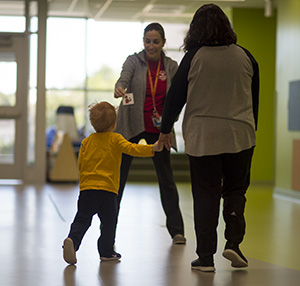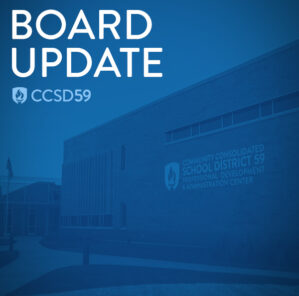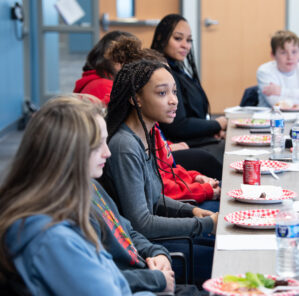Speech and Language
El habla y lenguaje
What is a Speech and Language Pathologist’s Role in the Educational Setting?
According to the American Speech Language Hearing Association (ASHA), Speech Language Pathologists (SLPs) work to prevent, assess, determine eligibility, and treat speech, language, social communication, and cognitive-communication deficits in children.
What is a Communication Disorder and who would benefit from services?
According to ASHA a Communication Disorder can be placed into the following categories:
- Speech Disorders occur when a person has difficulty producing speech sounds correctly or fluently (e.g., stuttering is a form of disfluency) or has problems with his or her voice or resonance.
- Language Disorders occur when a person has trouble understanding others (receptive language), or sharing thoughts, ideas, and feelings (expressive language). Language disorders may be spoken or written and may involve the form (phonology, morphology, syntax), content (semantics), and/or use (pragmatics) of language in functional and socially appropriate ways.
- Social Communication Disorders occur when a person has trouble with the social use of verbal and nonverbal communication. These disorders may include problems (a) communicating for social purposes (e.g., greeting, commenting, asking questions), (b) talking in different ways to suit the listener and setting (perspective taking), and (c) following rules for conversation and story-telling.
- Cognitive-Communication Disorders include problems with executive function such as, organizing thoughts, paying attention, remembering, planning, and/or problem-solving.

What is the process for considering Speech and Language services?
Early Childhood Program Referral Process
Parents of children between the ages of 3-5 years who are concerned about their child’s communication skills may contact the Early Learning Center at (847) 593-4306. Children who are currently receiving services through the State of Illinois Early Intervention Program will be scheduled for a transition meeting by their Early Intervention Service Coordinator.
Elementary Referral Process
RTI – Articulation if deemed appropriate
Response to Intervention (RTI) is a program designed to provide short periods of intensive teaching of targeted speech skills. The instruction is provided for approximately 20-30 minutes each week for 8-16 weeks. RTI is not a special education service. If your child continues to demonstrate significant speech/language needs after participating in the program, they may be referred for a speech and language evaluation.
Referral for language or fluency concerns
SLP may conduct informal observations and/or student may be referred to Multi-Tiered System of Supports (MTSS). During this process possible tiers of support(s) will be implemented and data collected. Supports in place will be faded if successful and intensified/ changed if student progress is minimal. If student progress continues to be limited with interventions in place the student may be referred for an evaluation to determine if the student is eligible for Special Education Services.
**Please Note: Not all disorders are found to negatively impact students in the educational setting, therefore some disorders would not be eligible for an individual education plan.
Are there parent resources I can access and use at home?
SLP Resources:
- ASHA – The American Speech and Language Hearing Association
- ISHA- Illinois Speech Language Hearing Association
- Super Duper – Materials
- Stuttering Foundation
- Apraxia Kids
- Starnet
¿QUÉ ES EL PAPEL DEL PATólogo DEL HABLA Y EL LENGUAJE EN EL ESCENARIO EDUCATIVO?
Según la American Speech Language Auditing Association (ASHA), los patólogos de habla y lenguaje (SLPs, por sus siglas en inglés) trabajan para prevenir, evaluar, determinar la elegibilidad y tratar el habla, el lenguaje, la comunicación social y los déficits de comunicación cognitiva en los niños.
¿QUÉ ES UN TRASTORNO DE LA COMUNICACIÓN Y QUIÉN SE BENEFICIA DE LOS SERVICIOS?
Según ASHA, un trastorno de comunicación se puede colocar en las siguientes categorías:
- Los trastornos del habla se producen cuando una persona tiene dificultades para producir sonidos del habla correctamente o con fluidez (por ejemplo, el tartamudeo es una forma de fluidez) o tiene problemas con su voz o resonancia.
- Los trastornos del lenguaje ocurren cuando una persona tiene problemas para entender a los demás (lenguaje receptivo) o para compartir pensamientos, ideas y sentimientos (lenguaje expresivo). Los trastornos del lenguaje pueden ser hablados o escritos y pueden involucrar la forma (fonología, morfología, sintaxis), contenido (semántica) y/o uso (pragmática) del lenguaje en formas funcionales y socialmente apropiadas.
- Los trastornos de comunicación social ocurren cuando una persona tiene problemas con el uso social de la comunicación verbal y no verbal. Estos trastornos pueden incluir problemas (a) comunicarse con propósitos sociales (por ejemplo, saludar, comentar, hacer preguntas), (b) hablar de diferentes maneras para adaptarse al oyente y establecer (toma de perspectiva), y (c) seguir las reglas de conversación y narración de historias.
- Los trastornos de comunicación cognitiva incluyen problemas con la función ejecutiva, como organizar pensamientos, prestar atención, recordar, planificar y/o resolver problemas.
¿CUÁL ES EL PROCESO PARA CONSIDERAR LOS SERVICIOS DE HABLA Y LENGUAJE?
Proceso de remisión del programa de la niñez temprana
Los padres de niños entre las edades de 3-5 años que estén preocupados por las habilidades de comunicación de sus hijos pueden comunicarse con el Early Learning Center al (847) 593-4306. Los niños que actualmente reciben servicios a través del Programa de Intervención Temprana del Estado de Illinois serán programados para una reunión de transición por parte de su Coordinador(a) de Servicios de Intervención Temprana.
Proceso de derivación elemental
RTI – Articulación si se considera apropiado
Respuesta a la Intervención (Response to Intervention) (RTI) es un programa diseñado para proporcionar breves períodos de enseñanza intensiva de habilidades específicas del habla. La instrucción se proporciona durante aproximadamente 20-30 minutos cada semana durante 8-16 semanas. RTI no es un servicio de educación especial. Si su hijo(a) continúa demostrando necesidades significativas de habla / lenguaje después de participar en el programa, pueden ser remitidos para una evaluación de habla y lenguaje.
REFERENCIA PARA IDIOMAS DE IDIOMA O FLUIDEZ
Los SLP pueden realizar observaciones informales y / o el estudiante puede ser referido al Sistema de Apoyo de Múltiples Niveles (MTSS). Durante este proceso, se implementarán posibles niveles de soporte y se recopilarán los datos. Los apoyos en el lugar se desvanecerán si tienen éxito y se intensifican / cambian si el progreso del estudiante es mínimo. Si el progreso del estudiante continúa siendo limitado con intervenciones en su lugar, el estudiante puede ser referido para una evaluación para determinar si el estudiante es elegible para Servicios de Educación Especial.
** Tenga en cuenta: No todos los trastornos tienen un impacto negativo en los estudiantes en el entorno educativo, por lo tanto, algunos trastornos no serían elegibles para un plan de educación individual.
¿HAY recursos para padres que puedo acceder y usar EN CASA?
Recursos de SLP:
ASHA – La Asociación Estadounidense de Habla y Lenguaje
ISHA- La asociación de Habla y leguaje de Illinois
Super Duper – Materiales
Fundación de tatarmudeo
Niños de Apraxia
Starnet



